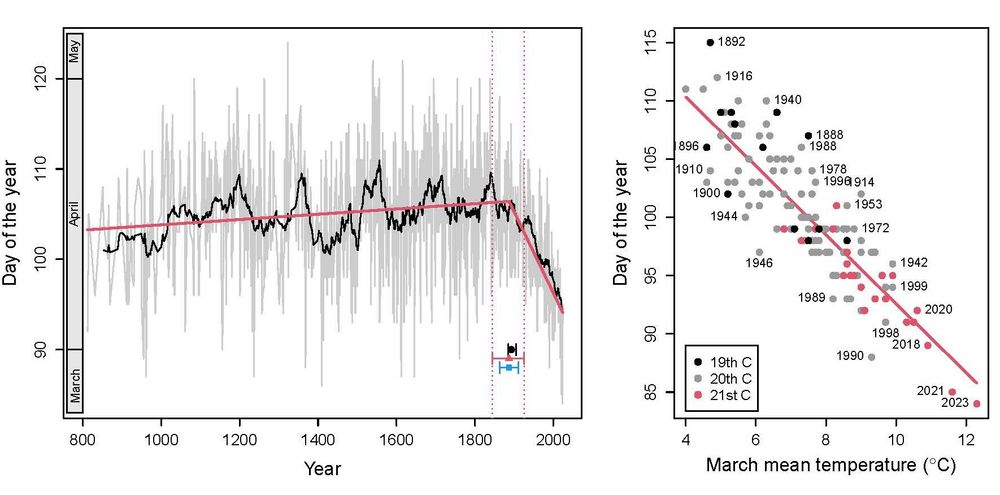
A photo of a roof construction in a flowering heathland

A phot of a roof, from a lower angle, with TOMST moisture and temperature sensors visible underneath

A photo of a transparent chamber that is placed over the soil, connected to an infrared gas analyser for measuring CO2 concentrations

A photo of a blacked out chamber that is placed over the soil, connected to an infrared gas analyser for measuring CO2 concentrations
Using a unique long-term field experiment, we show that chronic (20 years!) drought reduces ecosystem CO2 uptake and persistently shifts soil fungal and bacterial communities, but that shifts in plant communities determine ecosystem CO2 fluxes. 🧵
www.uva.nl/en/shared-co...
10.09.2025 11:14 — 👍 40 🔁 12 💬 2 📌 0
@marcusframes.bsky.social !!
04.09.2025 13:37 — 👍 0 🔁 0 💬 0 📌 0
We found hydrochemical spatial variations are indicative of increasing evaporative concentration and decreasing streamflow with decreasing altitude. Also major ions and stable isotopic data suggest groundwater as a uniform source feeding streamflow.🏞️💦
04.09.2025 13:33 — 👍 0 🔁 0 💬 1 📌 0
Stellenanzeigen - Georg-August-University Göttingen
Website of the Georg-August-University Göttingen
Postdoc position in the lab of @biogeokreft.bsky.social for developing your own line of research in macroecology, biogeography, and functional or tropical ecology:
www.uni-goettingen.de/en/644546.ht...
19.06.2025 12:38 — 👍 27 🔁 24 💬 1 📌 1
Portail Emploi CNRS - Offre d'emploi - Offre de post-doctorat en écologie (H/F)
Please pass along - postdoc position! with our working group on #FunctionalTraits and rarity. This is part of the FREE (Functional Rarity in Ecology and Evolution) working group led by Cyrille Violle in Montpellier France 🧪🌐🌾 emploi.cnrs.fr/Offres/CDD/U...
17.06.2025 20:40 — 👍 72 🔁 87 💬 2 📌 1

social media card for the Women Advancing River Research Lecture series. This month's talk: Key Drivers of Carbon Fluxes in Watersheds: Hydrobiogeochemistry, Weathering, and Extreme Events
This WEDNESDAY tune in for this month's #WARR -- 6/16 11 AM Eastern hear from two #WomenInSTEM on how extreme events drive fluvial carbon exports. Register here: www.cee.psu.edu/events/women...
16.06.2025 17:50 — 👍 6 🔁 4 💬 0 📌 0

Phenology changes for the Japanese cherry tree (Prunus jamasakura) in Kyoto. Left: Day of the year of the flowering peak for the period between 812 and 2024. Right: Relation between March mean air temperature (°C) in Kyoto and the day of the year of the Japanese cherry tree peak flowering for the period between 1890 and 2024.
https://jgpausas.blogs.uv.es/2025/06/11/134-years-of-climate-warming-effects/
Climate warming is not a recent phenomenon; it has had detectable impacts on plants for at least 134 years!
The onset of phenological plant response to climate warming @newphyt.bsky.social
nph.onlinelibrary.wiley.com/doi/10.1111/...
🧪🌎🌿🌐🌳 🍁 #PlantBiology @cideinvestiga.bsky.social @csic.es
11.06.2025 12:21 — 👍 138 🔁 69 💬 3 📌 9
Hot topics on Plant Ecophysiology! From the tropics to aridlands 🍃☀️
www.aparecidolab.com
Assistant Professor, University of Utah (SLC)
🇧🇷>🇺🇸
Professional wildlife photographer. WPY alum. Doing my best to share the natural world.
I am a professor of tropical ecology at the University of York. I have a passion for Mountain ecosystems and cultures across the Global South, particularly in Kenya and Tanzania where I work with many Universities, NGOs and Government organisations.
Hydrologist in the PNW 🐻🌲 | Interested in rivers, bluegrass music, and wild places | Views my own
https://adamnicholasprice.github.io
Ecophysiologist investigating plant responses to heat and drought 🌡️💦🌲 at the University of Utah 🇺🇸
From 🇧🇷
Passionate about Hydrology and Geochemistry, fan of environmental tracers. Specially when it comes to mountains (streams, groundwater and rock-water interactions).
Also devoted to choirs and polyphonic music, humble second tenor.
Santiago, Chile
Postdoctoral oceanographer studying the ocean carbon sink 🦈🤿🕹️
🏠 @imev-mer.fr (CNRS-Sorbonne Université) as part of the Horizon Europe @tricuso.bsky.social project
💻 https://louisedelaigue.owlstown.net/
🚀 http://bit.ly/3HWFD5I
PhD researcher at the University of Helsinki, working with wood anatomy (conduits and their pits). Also, I am a hobby artist, teaching myself animation/cartoons right now (YouTube: Pinus caelestis). 🌲🌳🪵🐦⬛🪐
ETH PostDoc fellow @KirchnerLabETH, PhD in #isotope #hydrology @unil, Btech & Mtech @IITKgp, #inquisitive
https://www.harshberia.com/
Professor, ecology, FU Berlin, own views, book author
Global change, soil, fungi, environment, microplastic, biodiversity 🧪
https://www.youtube.com/@mrillig
https://www.youtube.com/@lifeinthesoil
rilliglab.org
https://matthiasrillig.substack.com
#Forest #Hydrologist at the Government of #Alberta | #geographer and #rewilding believer | #forests, #wildfire, & #water security | Husband, father, baker, boxer, omnivorous, loud sneezer!
CIDE-CSIC, ecology & evolution in fire-prone ecosystems🧪🌍🔥
Web: https://www.uv.es/jgpausas/index.htm
Blog: http://jgpausas.blogs.uv.es/
#Mycorrhiza #Soil #Evolution #PlantScience #Fungi #Sustainability, leads @sheffieldpps.bsky.social at @sheffielduni.bsky.social, Senior Editor @funecology.bsky.social, Deputy EiC @plantspeopleplanet.bsky.social
Wildlife, trees, terrestrial ecology, night, trees, corvids, coffee, cats. | Nocturnal (DSPD). AuDHD. They/them.
My nonhuman animal equivalent is the badger.
"Night is a world lit by itself."
—Antonio Porchi
Environmental scientist. Postdoc at the Leibniz Institute of Freshwater Ecology and Inland Fisheries. Learning enthusiast and listener above all. [She/Her]
Powered by mate 🧉 🇦🇷
water security | environmental security | crop per drop | ecosystem services | irrigation
Together, we can create a world where people and nature thrive. 🌍💚 Subscribe for real-world solutions to our planet’s biggest challenges: nature.ly/GlobalInsights
Global coordination network for #MountainResearch collaboration. We are making connections for #OurChangingMountains.










